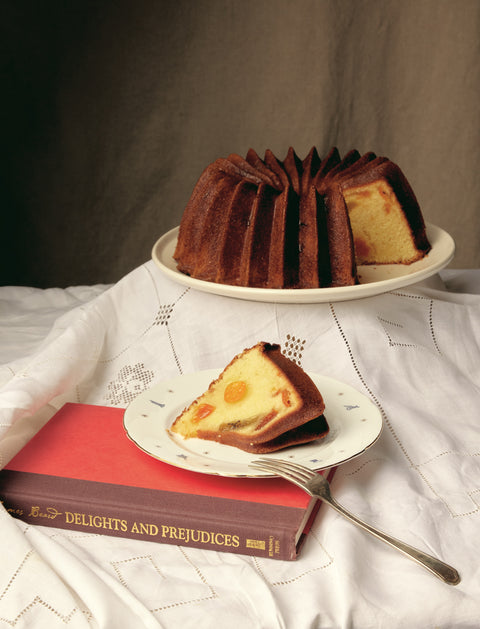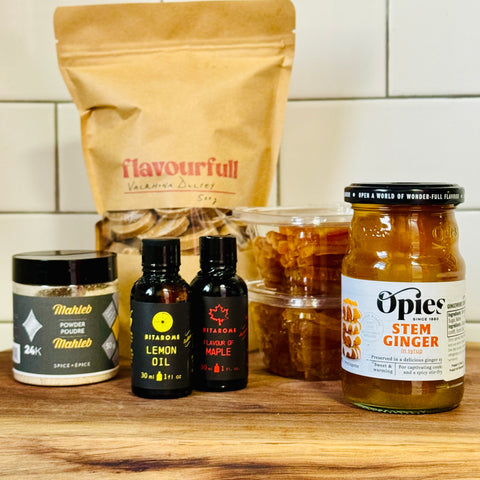With the holiday season fast approaching, we know many of you are already planning your next baking adventures. To inspire you, we’re taking a detour from our usual content to introduce you to a sweet new release: Nature’s Candy, the latest cookbook by Toronto-based recipe developer and culinary educator Camilla Wynne.
Camilla is the author of the beloved Jam Bake and one of Canada’s few certified Master Preservers. During the pandemic, she began teaching virtual classes from her home kitchen, including a workshop on candying fruit—something she’s been passionate about since pastry school. The overwhelming popularity of that class inspired her to dive deeper, resulting in Nature’s Candy. This beautifully written book makes an old-fashioned technique surprisingly modern and approachable, and is a treasure trove of creative recipes that make the most of candied fruit, showing just how versatile and intensely delicious these ingredients can be.
230 g (1 cup) unsalted butter, at room temperature (very soft)
533 g (2 ⅔ cups) sugar
1½ tsp salt
Zest of 1 lime
6 eggs, at room temperature
420 g (3 cups) all-purpose flour
250 mL (1 cup) full-fat coconut milk
500 g (2 cups) drained and chopped (½- to 1-inch pieces) mixed candied fruit
(pages 56–57), reserving the syrup
125 mL (½ cup) candied fruit syrup (see Note)
60 mL (¼ cup) lime juice
2 Tbsp dark rum (optional)
- Preheat the oven to 350°F (175°C). Generously grease and amply flour a 10- to 12-cup Bundt pan and refrigerate the pan until it’s time to fill it.
- To make the cake, in the bowl of a stand mixer fitted with the paddle attachment, cream the butter, sugar, salt, and lime zest until light and fluffy. Add the eggs one at a time, beating well after each addition.
- With the mixer running on low speed, add one-third of the flour and then half of the coconut milk. Alternate until all the flour and coconut milk are incorporated.Scrape down the sides of the bowl, then beat on medium-high for 30 seconds to make sure everything is well blended. Fold in the chopped candied fruit. Transfer the batter to the prepared pan. Give the pan a hard tap on the countertop to help settle the batter. Bake for 1 hour and 10 minutes to 1 hour and 20 minutes, or until a toothpick inserted in the center comes out clean. Cool on a wire rack for 10 minutes. Meanwhile, make the syrup.
- To make the syrup, in a small pot, combine the syrup and lime juice. Bring to a boil and cook until it is reduced by half. Remove from the heat and stir in
the rum, if using. - To assemble, carefully turn the cake out of the pan. Use all the syrup to brush the cake all over the top and sides. Cool completely. The cake will keep, well wrapped, at room temperature for at least 5 days. Serves 16




Comments (0)
There are no comments for this article. Be the first one to leave a message!